Have you ever considered becoming a special education teacher?
Or maybe you’re already a teacher, but you teach in a general education classroom and wonder what a special education teacher does during the day?
This post will give you an inside look at a day in the life of a special education teacher!
I couldn’t write this post on my own, though! Even though I’ve worked with numerous students with special needs, I’m a reading specialist and not a certified special education teacher.
So Amy McDonald, a special education teacher from Newfoundland, has generously volunteered to share her experiences with us!!
She’s written a guest post to tell us all about what a “typical” day is like for her. Amy also shared how she uses my resources (Learning At The Primary Pond blog posts, webinars, and materials) in her role.
Thanks so much for writing this, Amy! Let’s dive in!

The Special Education Teacher: A Key Member for Successful Literacy Instruction
About Me:
Hello all, my name is Amy McDonald. I am a third year special education teacher in St. John’s, Newfoundland in Canada. I have a Bachelor’s degree in Education (focusing on Primary/Elementary and literacy instruction) and a Bachelor’s degree in Special Education. While still early in my career, I have had opportunities to work with students ages 4-15 in the capacity of a general and special education teacher. This past year, I worked in the special education department of two local elementary schools. Both schools follow an inclusion based model. This means that students spend most of the day in the general classroom, where I come in to support their learning. Occasionally, I pull them out to work in my resource room. Between both schools, there were 31 students on my caseload, the majority having social-emotional and/or literacy learning needs. As well, several of my students were on the Autism Spectrum, and many were English Language Learners.
The Role of a Special Education Teacher
Many classroom teachers see Special Education colleagues going in and out of classrooms, collecting groups of students, walking the halls with students who have severe social-emotional or behavioral concerns, and inside resource rooms teaching “their” students. But there is so much more to what we do! Like classroom teachers, we have a schedule to follow. However, we have to be extremely flexible to meet the academic, physical, and emotional needs of the students we support. A large part of our job is teaching in a collaborative manner in order for all students to be successful. That means a lot of communicating, planning, and following up with classroom teachers, reading specialists, speech-language pathologists, guidance counselors, English second language teachers, student and teacher assistants, administrators, other special education teachers, parents and guardians, and possibly outside agents. Primarily, I teach within the classroom, bringing my lessons and materials with me. However, there are times I pull individuals or small groups out to my resource room for concentrated instruction or assessment. Whatever interventions are used with the student, by both the classroom teacher and myself, it is my job to document it in the appropriate paperwork. It is also a part of my job to ensure these interventions follow the individualized education plan in place, and to ensure the student is receiving appropriate accommodations for instruction and assessment within the general education classroom.
The key for student success is constant communication and collaboration between myself and classroom teachers. Twice a month, or as needed, I meet with my special education team. We discuss interventions used with specific students, any strengths or areas of concern, and gather further suggestions of activities or research which may be used. A “typical” day for a special educator is very busy and extremely flexible.
An Example of a “Typical” Day
What I am about to present to you is just one example of a day in my role as a special education teacher. Other special educators may have quite a different day, especially if they work primarily in a resource room or with students with pervasive needs. It is important to note that while I worked at two school sites, I would spend the entire day at one site most days.
7:45-8:10 am: I sit down at my desk to look over the plan for today. I do final preparation of the work needed for the day, and check emails from administration, other teachers, and parents. If I have time, I begin planning for the upcoming days.
8:10-8:30 am: The first bell rings and doors open. I do not have morning duty today, so I have time to check to see if the students I work with are present, check in with teachers, assist with any arising behavior concerns, and drink my coffee.
8:30-9:00 am: I check in with the students who have social emotional learning needs who are on my caseload. These students need assistance with their morning routines to settle in, need to be provided with a sensory break in the resource room (when needed), and may need targeted interventions to deal with emotions or social behaviors.
9:00-9:30 am: I am assisting during the literacy block centers in the grade one classroom. I especially love collaborating with this teacher! We are able to have open conversations, support one another easily, and share our resources. Her literacy block centers are amazing! We both follow Learning at the Primary Pond, and she runs her literacy block with much influence from Alison. Students rotate between 4-5 centers in mixed-ability groups, with a choice of activities to complete at each center. She runs a guided reading table in the back, which is not a center students rotate to. Rather, she pulls students from their groups, when needed. Similarly, I work with students requiring extra support at a table at the front of the room. We plan together to ensure we are not planning to work with individual students for intensive instruction at the same time. That way, all students are seen, and students with great difficulties can work with both of us and independently during this hour. Sometimes I bring students to the resource room to complete more involved lessons from literacy-based programs purchased by our district. For the first 30 minutes I work one-on-one with a student who was considered a pre-reader when I began with him. We focus on phonological awareness tasks and letter-sound association. After completing my lesson, I fill out a daily intervention record. The classroom teacher is between guided reading groups, and she pops over to tell me some wonderful news about this student. She has observed great improvement in his reading abilities! At the beginning of the year, he was a non-reader. He knew most letter names, few phonemes, and a couple of sight words. Just yesterday, he was able to decode and comprehend a “D” level text, reading with great fluency. We know he is not yet at grade level, but we are happy all the same. We take a moment to watch him settle into his word work activity, clink our coffee mugs in a celebratory cheers, and head back to work smiling.
9:30-10:00 am: Next, I have a group of four grade one students working on developing their decoding strategies. Today our focus is on chunking unknown words into familiar pieces. Reflecting on what I have learned from Learning at the Primary Pond webinars, I follow an I do, We do, You do model to introduce the concept. Two of the students catch on to this strategy quickly. We will further explore this strategy in upcoming sessions.
10:15-11:15: After a recess break, I head to the grade two classroom to provide support during their literacy block. I have some activities planned for the students I work with; however, the teacher needs me to change the routine today. She asks me to work on an independent process writing piece assessment with one of our students. This is a boy on the Autism spectrum, who has attention issues and severe behavioral concerns at times. He has been extremely frustrated working on this piece in the classroom. Myself and a student assistant bring him to my resource room for a quiet space where he can take needed sensory breaks. I encourage him to take his brainstorming ideas and develop it into a good first draft. While I cannot help him with spelling, grammar, etc., I am able to guide him through the writing process while keeping him calm and focused. At the end of the period, I talk with the classroom teacher, and we plan to continue working on this in the resource room over the next week.
11:15-11:30: This is my prep period. During this period I am busy planning and prepping, but I must keep my cell phone close in case I am needed to assist with any issues or provide a student with a supervised break.
12:30-1:30: After a lovely lunch break, I go to the conference room for a team meeting with the special education teachers and administration. The meeting is a great chance for us to check in, discuss students’ progress, and plan for the upcoming weeks.
1:30-2:30: I check back in with the students in grade one who have social-emotional learning needs. I provide in-class support as many are struggling with a mini-science research project. Students are gathering information about an assigned animal from books, videos, and online articles and creating a poster about their animal. Many of the students I work with are overwhelmed with gathering relevant information and organizing it in a meaningful way.
After 2:30 dismissal: I check in with the classroom teachers about our plans for tomorrow. Then I finish my planning, photocopying, replying to emails I received after lunch, and look for some new activities online.
Conclusion
Much of the blogs, webinars, and overall information Learning at the Primary Pond provides is geared toward general education teachers. However, I find it very useful in my role. It is important to be up to date on literacy best practices to collaborate effectively. If I haven’t stressed it enough already, remember that open, honest, and frequent communication between classroom and special education teachers is essential for student success!
Thank you so very much for this post, Amy! If you have any questions for her, please feel free to leave them below.
Happy teaching!

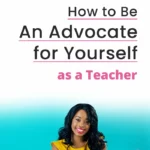
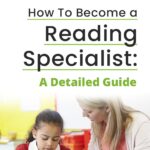
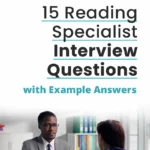
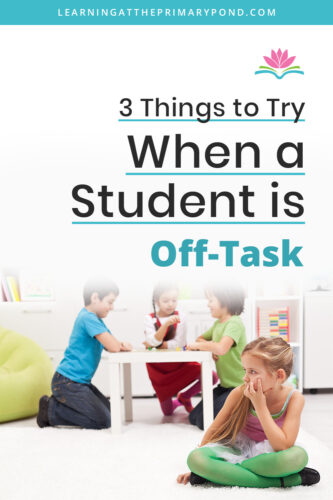

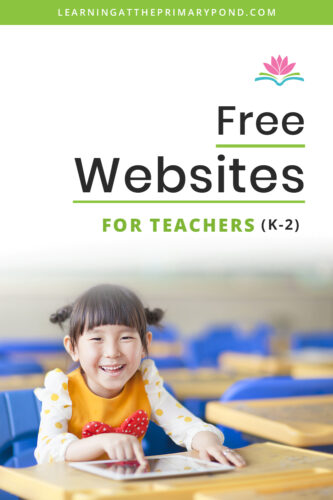






I follow your Instagram Alison and I love reading your blogs! This blog in particular I needed to read because I am considering to teach special education one day.
Thank you so much, Angie! I’m so glad this helped you along toward your decision!
Alison
Yes…..its great
I am also a special education teacher. Teaching primary and nursery kids. I enjoy my profession and help them always a new skill.
That’s amazing, Saurabh! Your enthusiasm is very inspirational! 🙂
Thank you so very much for writing this. I am currently a middle school student looking for a career to focus on. This gave a really great idea of what special education is like, expecially when the full day was laid out.
You’re so welcome, Shaylee! I’m so glad that you found this post helpful! 🙂
S l am special educator really love this field ,day to day learned more skills
Yes, Saranya! It’s SO important to love what you do! 🙂
My name is Abby and I am looking at doing a career change. After hiring a Career Counselor and doing much research, Special Education teaching is one of the fields I am considering. I found it interesting to see this as an option for me since when I was a small child I took an interest in Special education. I certainly enjoyed reading about your day and challenges you have faced. I do have a question for you, is there much opportunity for growth with in this field?
Hi Abby! As I pointed out in the article, I am not a special education teacher. However, I do know special education teachers who have gained more expertise in their field and eventually moved into the role of managing a team of other special education teachers. They also partake in and have opportunities to experience tons of professional development, which I think is the best way to GROW!
The day of a special education teacher is not what is expected. This article is really eye opening. Thanks for sharing!
Glad it was helpful!